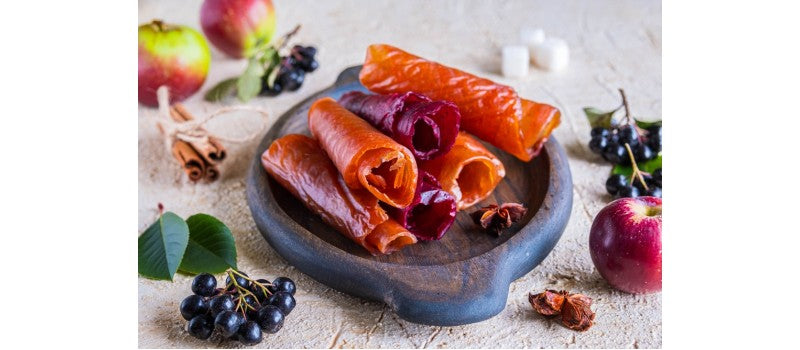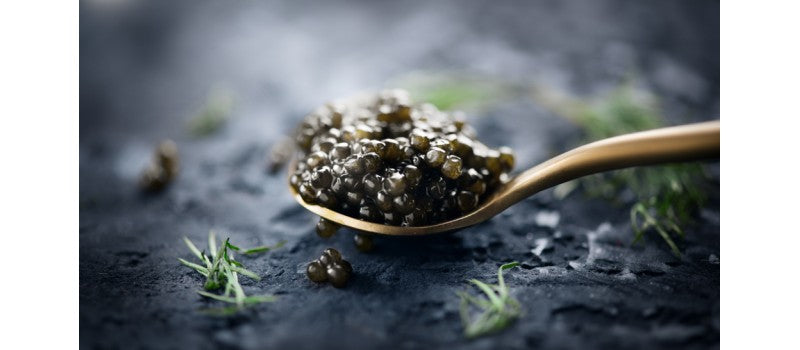
Exploring The Different Varieties Of Russian Sushki
10 min reading time

10 min reading time
Have you ever had Sushki from Russia? Though they may not be as well-known abroad as their Japanese counterparts, these little, round, and mildly sweetened bread rings are very important to Russian food and culture. Discovering the various Russian Sushki variants is a wonderful journey worth taking, whether you're a food fanatic hoping to broaden your culinary horizons or just inquisitive about the varied world of international munchies.
Sushki from Russia are more than just a well-liked snack. They have been enjoyed for generations and have a significant connection to Russian tradition. Traditionally, a basic dough made of flour, water, sugar, and perhaps a small amount of salt or spice is used to make them. The dough is formed into little rings, then quickly boiled and cooked until perfectly crispy. This results in an exterior that is crunchy and an interior that is soft and airy, making it a perfect match for a cup of hot tea or coffee.
Discovering the various Russian Sushki variations offers you a window into Russian culture and history in addition to introducing you to a fascinating world of flavors. The wide variety of Sushki highlights the distinctive culinary subtleties of each location while reflecting the size of Russia and its regional culinary traditions. Through these delicious treats, you may take a virtual trip through Russia, tasting its unique flavors and discovering a little portion of its rich history.
Russian sushki, sometimes called sukhariki, are a special kind of baked bread that have been consumed in Russia for many years. In Russian cuisine, these tiny, crunchy, spherical delicacies are frequently served as snacks or with tea.
Sushki are ingrained in Russian culture and have a rich history. Traditionally, they were prepared at home using basic supplies including yeast, flour, and water. These days, sushki are made commercially as well and come in a range of flavors.
The various types of Russian sushki will be discussed in this article, emphasizing the range of choices that are currently accessible. There is a sushki to fit every taste and nutritional requirement, ranging from classic plain to flavored and even gluten-free varieties.
The basic sushka is the most popular and traditional type of Russian sushki. A straightforward dough made of flour, water, yeast, and salt is used to make these sushki. After that, they are formed into tiny rings or puffed knots and baked to get that unique crunch.
The solid texture and gently sweet flavor of the plain sushki go nicely with tea or other hot liquids. The traditional way to consume them is to dunk them into tea or coffee, letting the flavors combine and liquefy the sushka.
Flavored sushki have become more and more popular in recent years, providing a tasty variation on the classic plain sushki. These flavored versions frequently include other ingredients, including herbs, spices, or seeds, which improve the flavor and add texture.
Garlic, dill, sesame, poppy seeds, and even cheese are a few popular flavors. The flavorful sushki elevate the already excellent plain sushki to a whole new level. They provide a distinctive taste experience. They're ideal for anyone who want to branch out and give their usual nibbling a taste boost.
There are solutions accessible for those on a gluten-free diet as well. Alternative flours, such as rice flour, almond flour, or a mix of gluten-free flours, are used to make gluten-free sushki. These sushki are acceptable for people with gluten sensitivity or celiac disease, while nevertheless maintaining the distinctive form and crunchy feel of typical sushki.
People with dietary limitations can still enjoy this popular Russian delicacy thanks to gluten-free sushki. Like their gluten-containing cousins, they can be eaten plain or flavored, offering a gluten-free substitute without sacrificing flavor or texture.
Russian tea biscuits, sometimes referred to as biscuit rings or sushki, are deeply ingrained in Russian history and culture. Generations of Russians have loved these little crunchy delicacies in the shape of rings, and they are now an integral element of traditional Russian cuisine.
Sushki are a staple of the Russian tea-drinking ritual, typically being served with a cup of tea. A custom of hospitality that has been carried down through the ages is serving guests sushki. Russians usually serve sushki and a cup of tea to guests as a way to greet them and create a cozy and welcome environment.
The history of sushki dates back thousands of years. Sushki were first baked in clay ovens, a traditional way of cooking in early Russian history, much like biscuits from other civilizations. These straightforward sweets, which reflected the modest lifestyles of the first Russian settlers, were created with simple ingredients like wheat, water, and occasionally honey. Sushki's circular shape is thought to represent oneness and eternity, giving their preparation and eating a deeper significance.
Sushki are now an essential component of Russian cultural events and festivals. Large batches of these delicacies are frequently made for important events like weddings, birthdays, and religious holidays. During these occasions, they are employed in a variety of games and activities in addition to being eaten as a snack. For instance, sushki can be strung together to make tasty garlands or connected with string to play the game of ring toss.
Sushki are typically eaten with tea, but they've also been included in a number of Russian cuisines. Sushki that has crumbled can be added to sweet dishes like cakes, puddings, and ice creams or used as a topping for them. For extra taste and texture, they can be dipped in chocolate or soaked in milk. Sushki have even been added to savory recipes in recent years, giving classic Russian cooking a distinctive new look.
Sushki are essential to maintaining Russian culinary customs and the country's cultural legacy. Sushki are still loved and made in Russian homes today because of its lengthy history and connection to the country's celebrations and hospitality. Many family recipes have been handed down throughout the years, guaranteeing that this popular confection will always be a representation of Russian culture and identity.
Russian sushki are little baked treats that are formed like rings and are a common snack in the country. A few staple ingredients are needed for this straightforward and classic recipe that makes these crunchy snacks. The following are the main ingredients of traditional Russian sushki:
The dough is formed into little rings or balls after it has been combined and kneaded. After that, these rings are gently cooked in water to acquire their recognizable texture. The rings are boiled and then baked till crispy and golden brown.
Finally, Russian sushki are a special kind of baked bread ring that have grown to be a popular snack in Russian cooking. They have a long history that spans several centuries, and as they have changed and varied over time, several variations have been created.
The traditional plain variety of sushki is one of the most popular varieties and is frequently consumed with tea. Its firm and crunchy texture, combined with its smooth and basic surface, make it a very filling snack. The plain sushki is a flexible snack that goes well with a wide range of flavors and dips because of its simplicity.
Sushkis come in a variety of shapes in addition to the classic ring shape. Sushki in the form of twists, for instance, have a more elaborate and eye-catching pattern. These twisted sushki are frequently offered at festive gatherings and noteworthy events.
In addition to being delicious, Russian sushki have several health advantages. They can be a healthy source of fiber and carbs and are low in fat. They are also a simple and easily accessible snack alternative due to their long shelf life.
People of all ages love sushki, which is a pleasant and adaptable snack that comes in basic, sweet, and savory forms. They are a treasured component of Russian cuisine because of their distinct texture, gratifying crunch, and variety of flavors.
So, think about sampling the various Russian sushki variations the next time you're enjoying a cup of tea or need a fast snack. Savor the abundance of flavors, textures, and history these baked bread rings have to offer.


